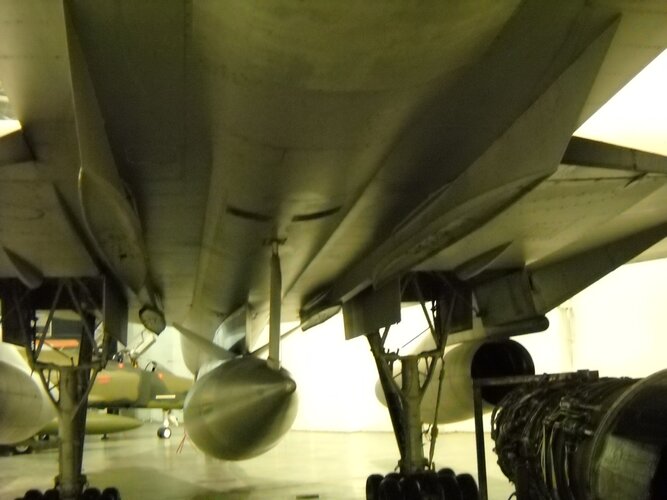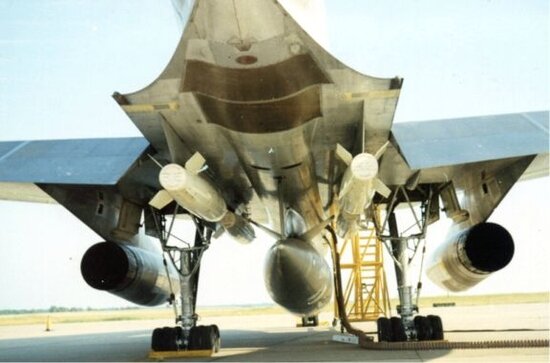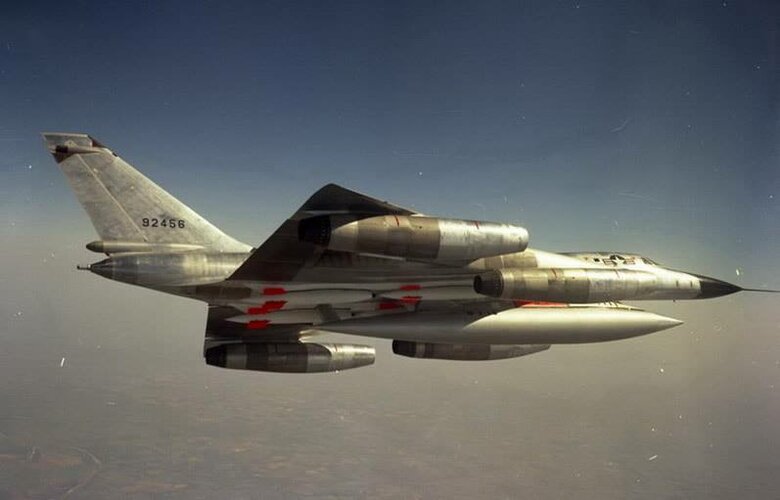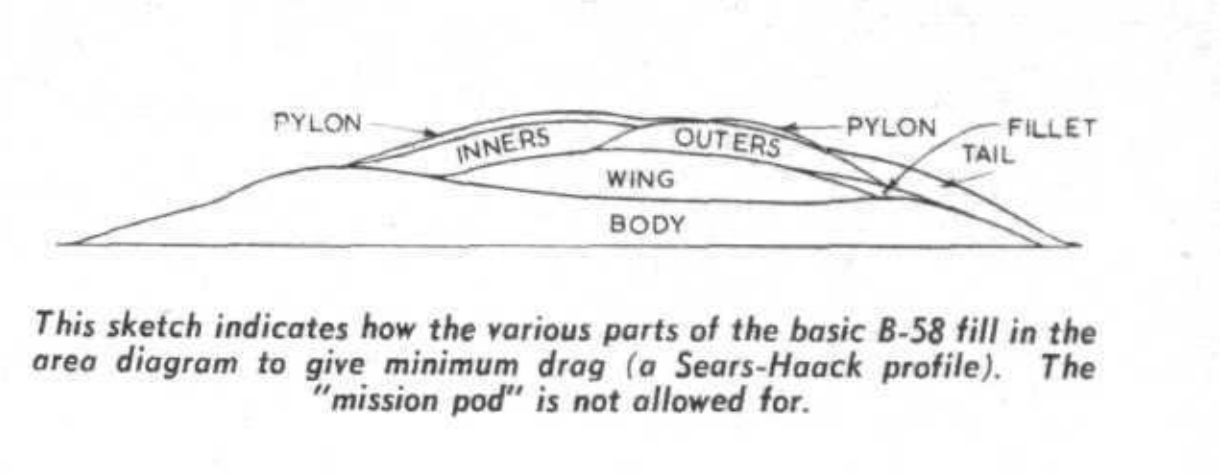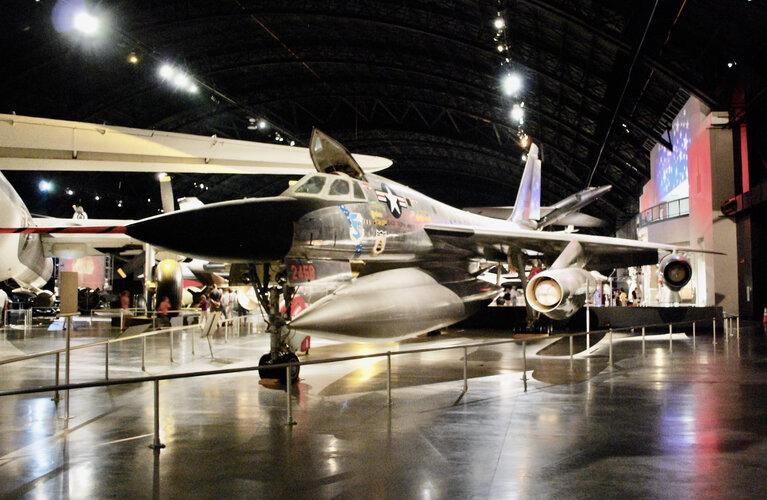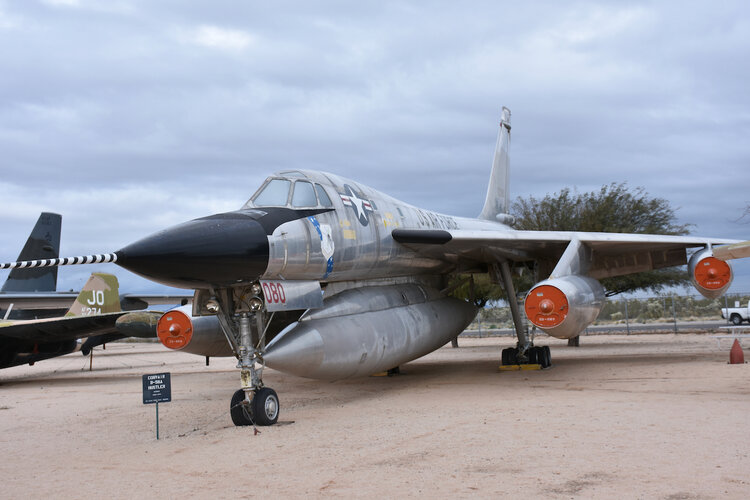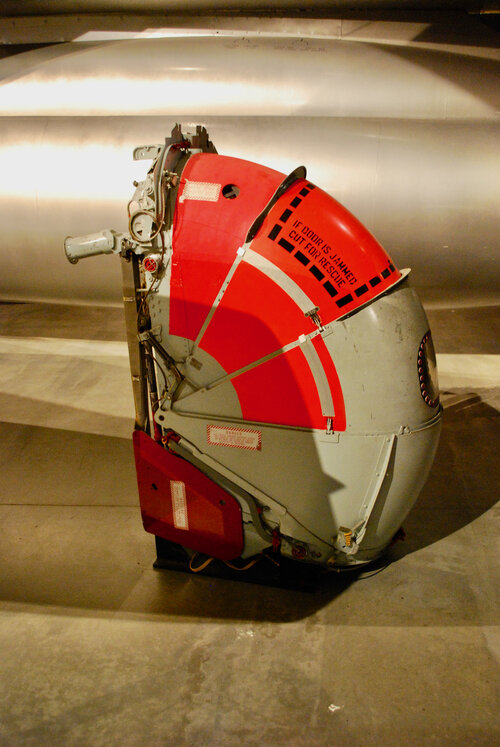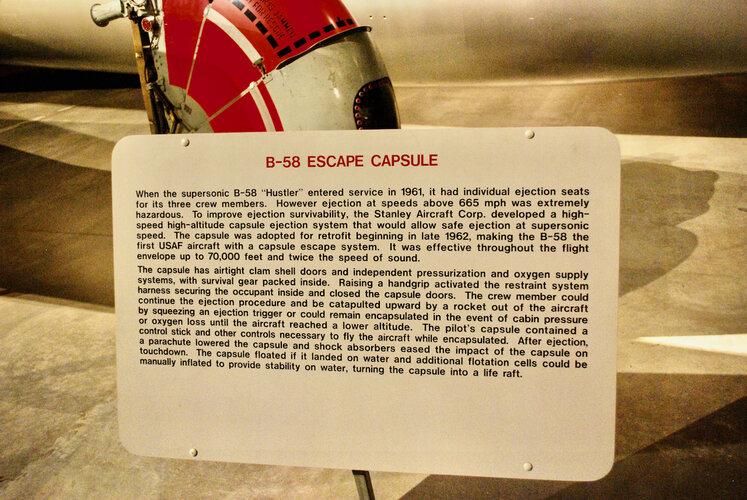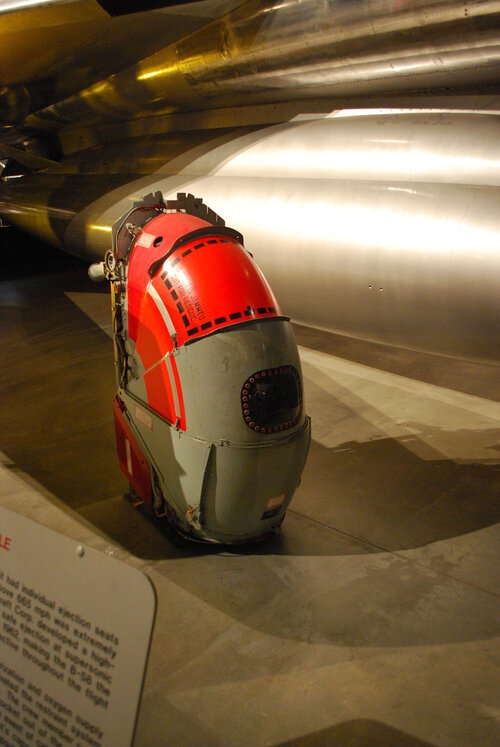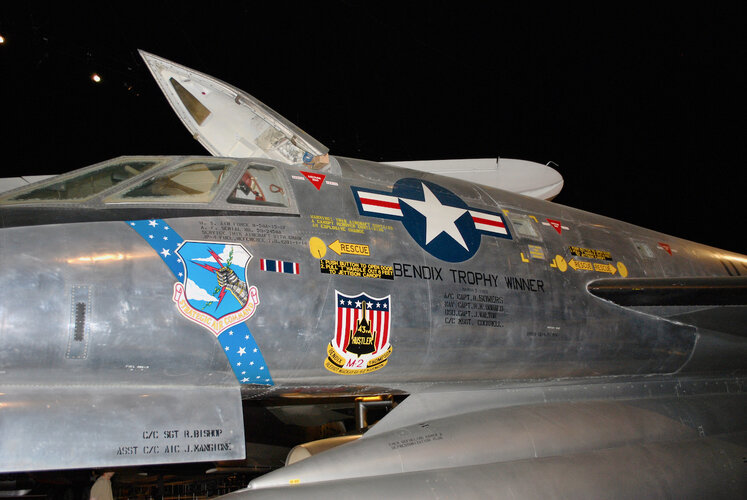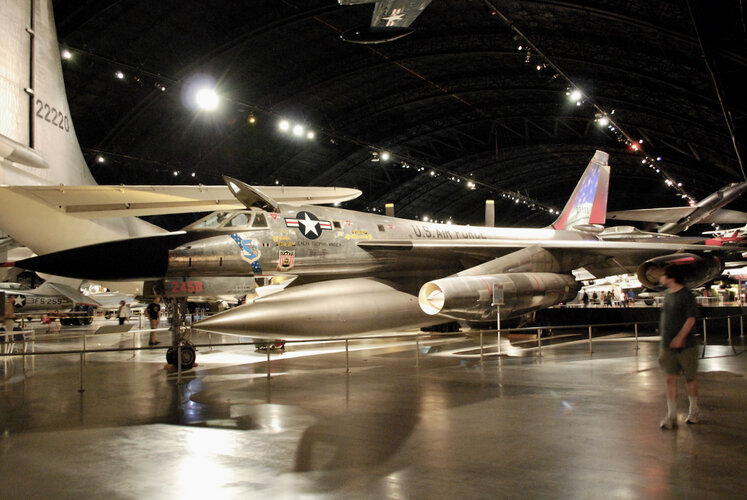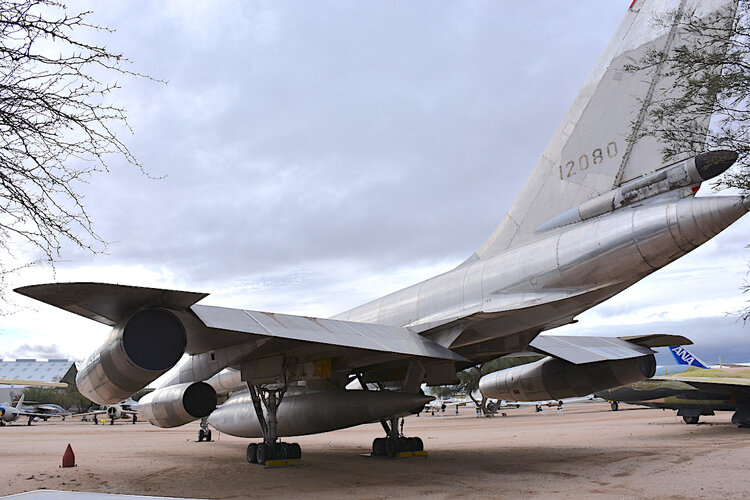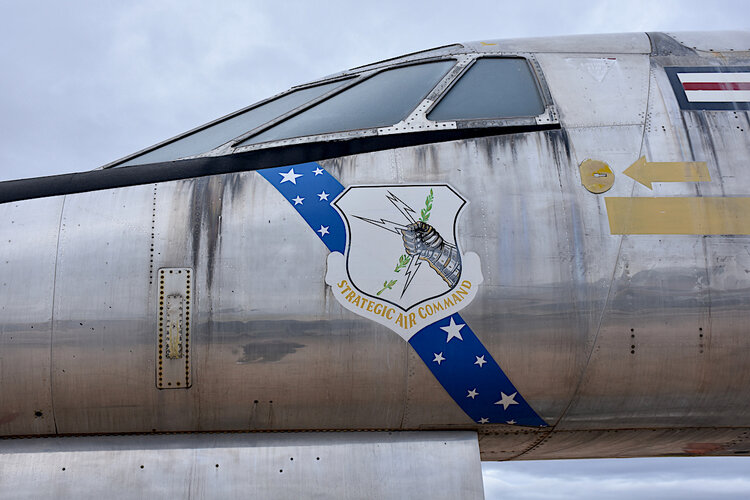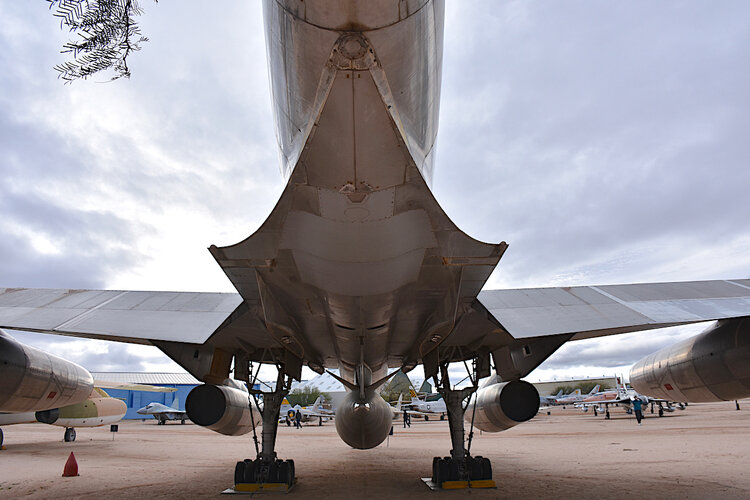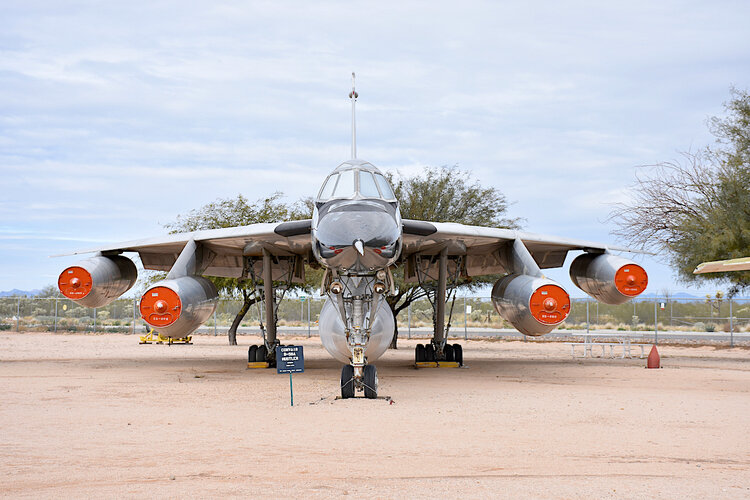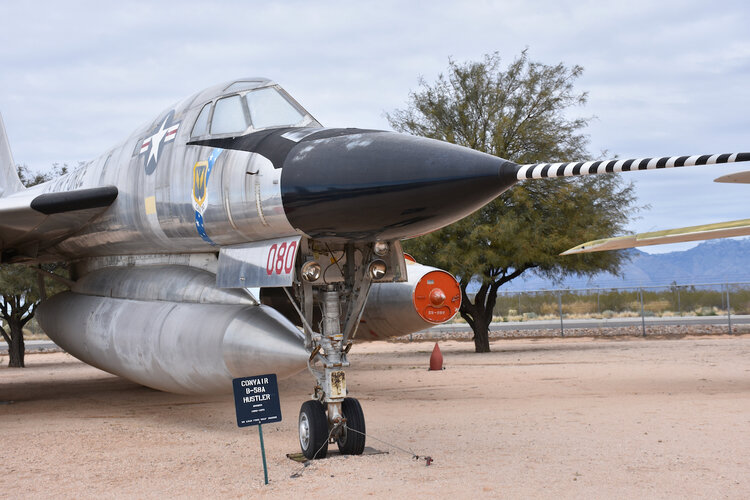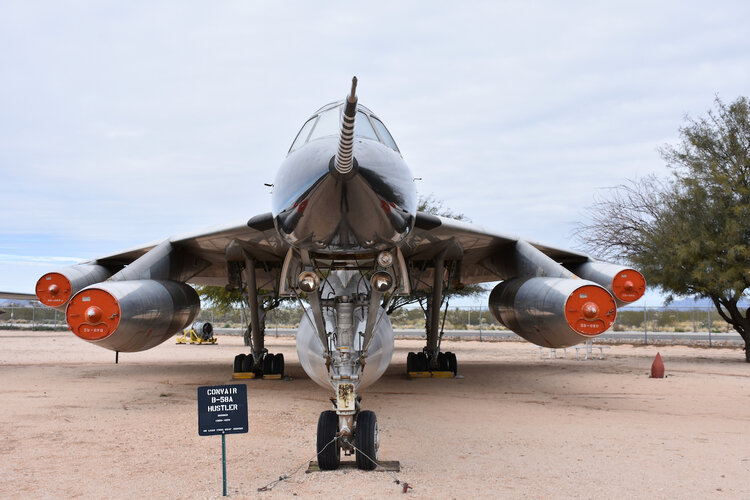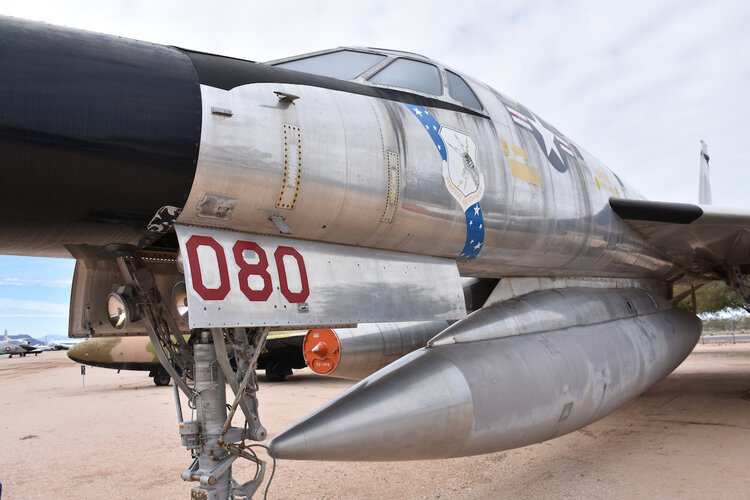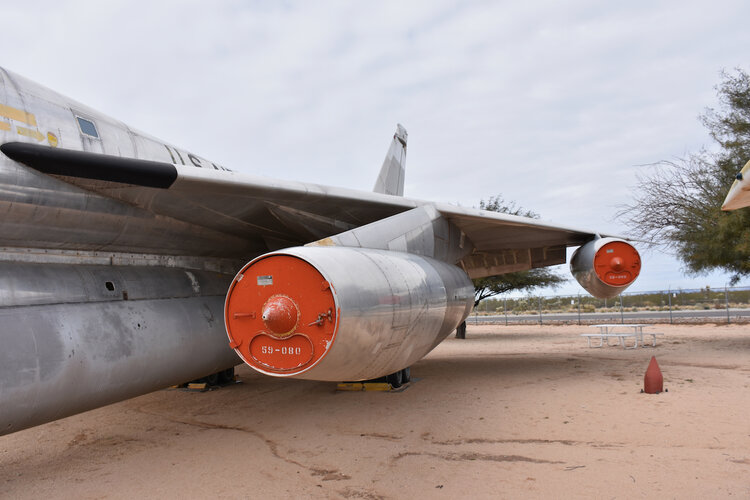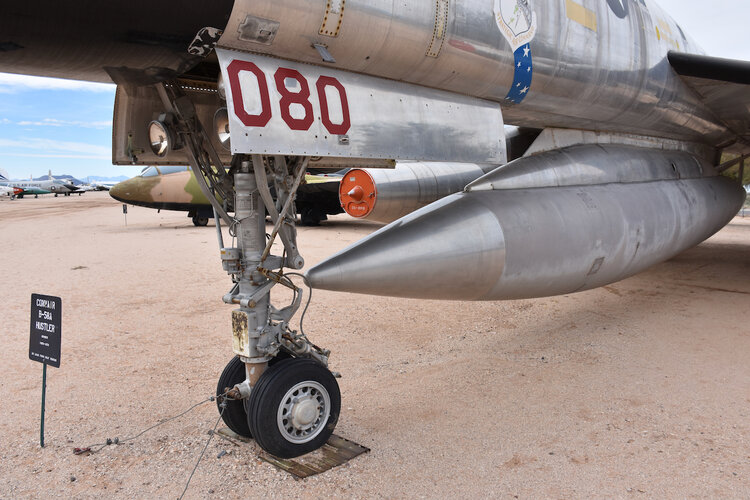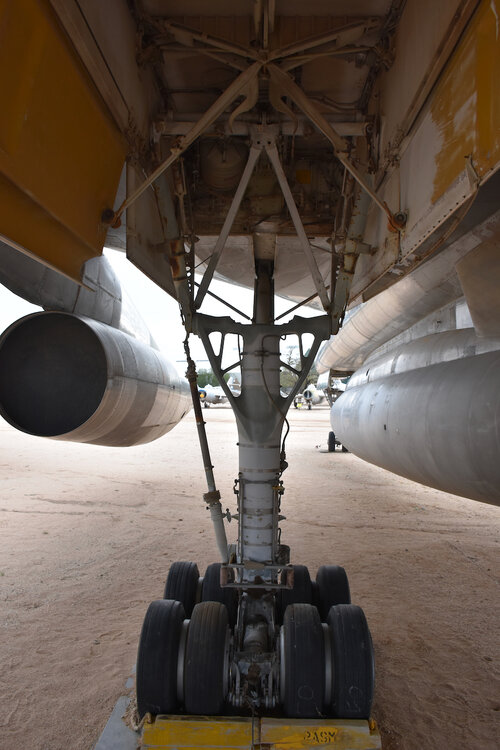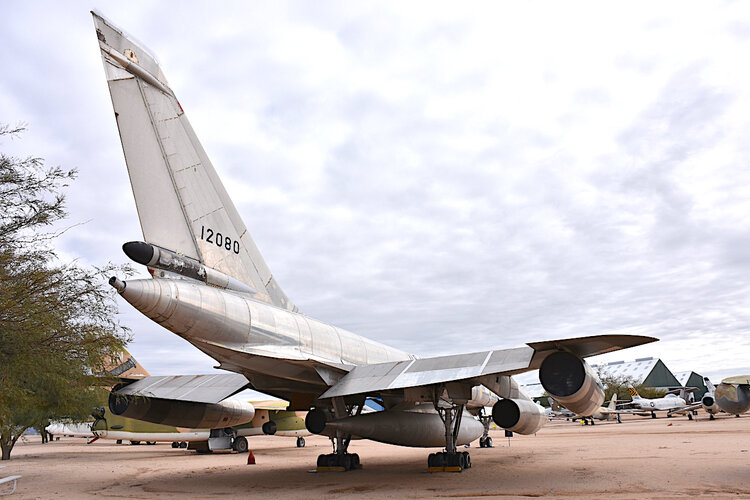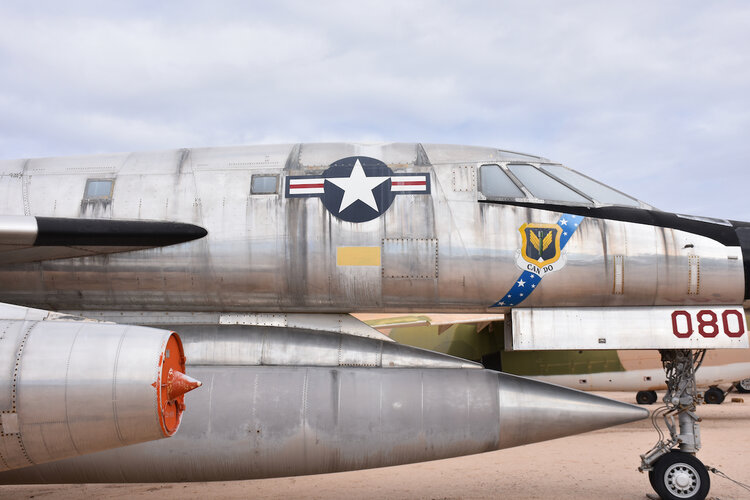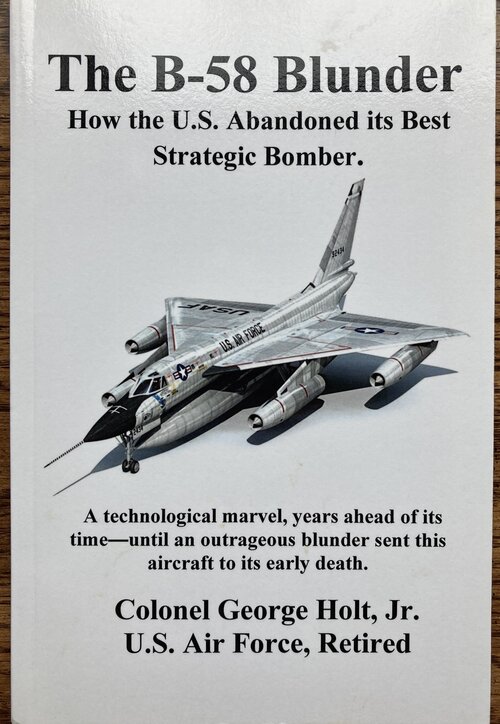While the B-58's performance and design were exceptional for the era, it was not an easy aircraft to fly. This was caused by the 60° leading-edge sweepback of its wing and was inherent in these types of delta-wing platforms. It required a much higher angle of attack than a conventional aircraft, up to 9.4° at Mach 0.5 at low altitudes. If the angle of attack was too high, in excess of 17°, the bomber could pitch up and enter a spin. Several factors could prevent a successful recovery; if the pilot applied elevon, if the center of gravity was not correctly positioned, or if the spin occurred below 15,000 ft (4,600 m), recovery might not be possible.
The B-58 also possessed unconventional stall characteristics; if the nose was elevated, the bomber maintained forward motion without pitching down. Unless large amounts of power were applied, the descent rate increased rapidly. Another problem pilots faced was called "fuel stacking", taking place whenever the B-58 accelerated or decelerated. It was caused by fuel movement within the tanks, which led to sudden changes in the aircraft's center of gravity. This could cause the B-58 to abruptly pitch or bank, potentially resulting in a loss of control.
The aircraft had unusual takeoff requirements, with a 14° angle of attack needed for the rotation near 203.5 knots (376.9 km/h; 234.2 mph) for a 150,000-pound (68,000 kg) combat weight (max takeoff weight was 176,890 lb (80,236 kg)).

